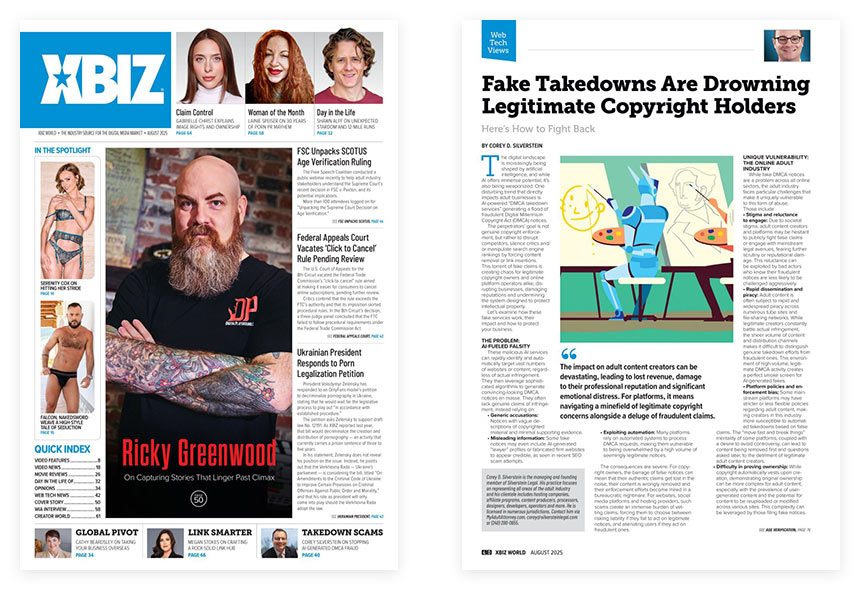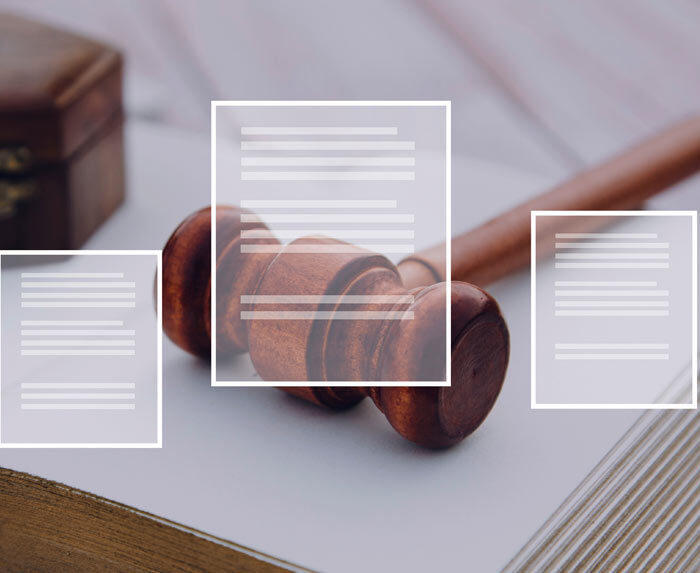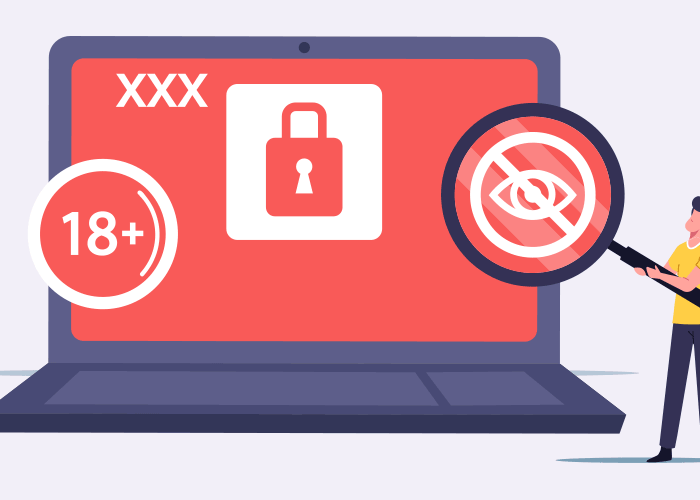The creator management business is booming. Every week, a new agency emerges promising to turn…

The digital landscape is increasingly being shaped by artificial intelligence, and while AI offers immense potential, it’s also being weaponized. A disturbing trend has emerged: AI-powered “DMCA takedown services” are reportedly flooding the internet with thousands of fraudulent Digital Millennium Copyright Act (DMCA) notices. This torrent of fake claims is creating chaos for legitimate copyright owners and online platform operators alike, disrupting businesses, damaging reputations, and undermining the very system designed to protect intellectual property.
Featured In The August 2025 Edition Of XBIZ World

The Problem: AI-Fueled Falsity
These malicious AI services leverage sophisticated algorithms to generate convincing-looking DMCA notices en masse. They often lack genuine claims of infringement, instead relying on:
- Generic Accusations: Notices with vague descriptions of copyrighted material and minimal supporting evidence.
- Automated Targeting: AI can rapidly identify and target vast numbers of websites or content, regardless of actual infringement.
- Exploiting Automation: Many platforms rely on automated systems to process DMCA requests, making them vulnerable to being overwhelmed by a high volume of seemingly legitimate notices.
- Misleading Information: Some fake notices may even include AI-generated “lawyer” profiles or fabricated firm websites to appear credible, as seen in recent SEO scam attempts.
Competitive Sabotage
The goal is often not genuine copyright enforcement, but rather to disrupt competitors, silence critics, or manipulate search engine rankings by forcing content removal or link insertions.
The consequences are severe. For copyright owners, it means their authentic claims get lost in the noise, their content is wrongly removed, and their enforcement efforts become mired in a bureaucratic nightmare. For online operators (websites, social media platforms, hosting providers), it creates an immense burden of vetting claims, risking liability if they fail to act on legitimate notices, or alienating users by acting on fraudulent ones.
A Unique Vulnerability: The Online Adult Entertainment Industry
While fake DMCA notices are a problem across all industries, the online adult entertainment sector faces particular challenges that make it uniquely vulnerable to this form of abuse.
Stigma and Reluctance to Engage
Due to societal stigma, adult content creators and platforms may be hesitant to publicly fight false claims or engage with mainstream legal avenues, fearing further scrutiny or reputational damage. This reluctance can be exploited by bad actors who know their fraudulent notices are less likely to be challenged aggressively.
Rapid Dissemination and Piracy
The nature of adult content often leads to rapid and widespread piracy across numerous “tube sites” and file-sharing networks. While legitimate creators constantly battle actual infringement, the sheer volume of content and distribution channels makes it difficult to distinguish genuine takedown efforts from fraudulent ones. This environment of high-volume legitimate DMCA activity creates a perfect smokescreen for AI-generated fakes.
Targeted Harassment and Abuse
Fraudulent DMCA notices can be weaponized for harassment or revenge. Individuals or groups with malicious intent might use fake claims to target specific creators, aiming to get their content removed, harm their income streams, or simply cause distress. This is particularly prevalent in cases of non-consensual intimate imagery (NCII), where victims already face significant challenges in getting content removed and false claims only add to their trauma.
Platform Policies and Enforcement Bias
Some mainstream platforms may have stricter or less flexible policies regarding adult content, making creators in this industry more susceptible to automated takedowns based on even slightly ambiguous or false claims. The “move fast and break things” mentality of some platforms, coupled with a desire to avoid controversy, can lead to content being removed first and questions asked later, to the detriment of legitimate adult content creators.
Difficulty in Proving Ownership
While copyright automatically vests upon creation, demonstrating original ownership can be more complex for adult content, especially with the prevalence of user-generated content and the potential for content to be re-uploaded or modified across various sites. This complexity can be leveraged by those filing fake notices.
The impact on adult content creators can be devastating, leading to lost revenue, damage to their professional reputation, and significant emotional distress. For platforms, it means navigating a minefield of legitimate copyright concerns alongside a deluge of fraudulent claims, all while trying to protect their users and comply with legal obligations.
The Fight Back: Strategies for Copyright Holders
Legitimate copyright holders are on the front lines of this battle. Here’s how they can protect themselves and their intellectual property:
Maintain Meticulous Records
- Proof of Ownership: Keep comprehensive documentation of your intellectual property, including creation dates, registration certificates (if applicable), metadata, contracts, and licensing agreements. This is your primary defense against false claims.
- Content Tracking: Implement systems to monitor for actual infringement of your work. This could involve automated tools, reverse image searches, and regular manual checks.
Scrutinize Every Notice
- Verify Claimant Details: Don’t assume legitimacy. Thoroughly check the contact information of the claimant and the “law firm” or entity they claim to represent. Look for inconsistencies, generic domains, or AI-generated imagery on their websites.
- Assess the Claim’s Specificity: Legitimate DMCA notices should clearly identify the copyrighted work, provide specific evidence of infringement (e.g., precise URLs), and detail how the content infringes. Vague or overly broad claims are red flags.
- Look for Hidden Agendas: Be wary if the notice asks for something other than content removal or licensing fees, such as linking to a specific website (a common SEO scam).
Understand Fair Use
Copyright owners have a responsibility to consider fair use before issuing takedown notices. This also means you should be aware of when your own use of content might fall under fair use, should you receive a false claim.
The Ninth Circuit Court of Appeals has notably ruled that copyright owners must consider “fair use” before sending a DMCA takedown notification, making them potentially liable for damages if they fail to do so.
Issue Counter-Notifications (If Applicable)
If you receive a false DMCA takedown notice for your own content, and you believe it was removed in error or through misidentification, you have the right to file a DMCA counter-notification. This can lead to the restoration of your content. Be aware that filing a counter-notification requires providing your identity.
Seek Legal Counsel
When in doubt, consult with an attorney specializing in intellectual property or internet law. They can help you navigate complex claims, assess the validity of notices, and advise on the best course of action, including suing for damages under Section 512(f) of the DMCA for misrepresentation.
Understanding DMCA Section 512(f): Penalties for Misrepresentation
Section 512(f) of the DMCA is a crucial safeguard against abuse of the takedown system. It states that:
“Any person who knowingly materially misrepresents under this section (1) that material or activity is infringing, or (2) that material or activity was removed or disabled by mistake or misidentification, shall be liable for any damages, including costs and attorneys’ fees, incurred by the alleged infringer, by any copyright owner or copyright owner’s authorized licensee, or by the service provider, who is injured by such misrepresentation, as a result of the service provider relying upon such misrepresentation in responding to a notice or counter notification under this section.”
In simpler terms, Section 512(f) is the anti-fraud provision of the DMCA. It imposes liability on anyone who intentionally files a false DMCA takedown notice or counter-notification. This means that if an AI-powered service (or the entity behind it) knowingly sends out notices claiming infringement where none exists, they can be sued for damages by those harmed, including:
- The alleged infringer: The individual or entity whose content was wrongly taken down.
- The legitimate copyright owner: If their content was falsely claimed as infringing, or if the fraudulent notices are interfering with their genuine enforcement efforts.
- The online service provider: The platform that had to process the false notice and potentially restore content.
The “knowingly materially misrepresents” standard is key. It requires proving that the sender of the false notice knew their claim was false or acted with reckless disregard for the truth. This provision aims to deter bad actors and provide a legal recourse for those negatively impacted by malicious and unfounded takedown attempts. It’s a powerful tool that copyright holders and operators can use to fight back against the AI-generated DMCA deluge, holding those responsible accountable for their disruptive and deceitful practices.
Fighting Back: Strategies for Online Operators
Online platforms are caught in the crossfire. To mitigate the impact of AI-driven fake notices and protect their users, operators should:
Enhance Verification Processes
- Human Review Integration: While automation is necessary for scale, a hybrid approach combining AI with human oversight for suspicious or high-volume claims can improve accuracy and prevent abuse.
- Requiring Detailed Evidence: Demand more specific and robust evidence from claimants, such as original creation files, timestamps, and direct comparisons of infringing material.
- Pattern Detection: Implement AI tools to detect patterns indicative of fraudulent activity, such as identical claims from multiple different “copyright holders” or a sudden surge of notices targeting a single user or content type.
Improve Communication and Transparency
- Clear Policies: Have clear and accessible policies regarding DMCA takedown procedures, outlining what constitutes a valid notice and the steps for counter-notification.
- Educate Users: Inform users about common DMCA scams and how to identify fraudulent notices. Provide clear channels for reporting suspicious activity.
- Communicate with Claimants: Engage with claimants to request further clarification or evidence when a notice seems questionable.
Prioritize User Protection
- Temporary Removal: Consider temporary removal of content in clear-cut cases, but avoid immediate permanent deletion without thorough review, especially for controversial or high-value content.
- Support for Counter-Notifications: Make the counter-notification process straightforward and accessible for users who believe their content was wrongly removed.
- Track Abuse: Keep records of users or entities that repeatedly file fraudulent DMCA notices and implement measures to restrict their ability to file future claims.
Collaborate and Share Information
- Industry Collaboration: Online operators can work together to share information about known fraudulent actors and AI-powered scam tactics.
- Law Enforcement Reporting: Report confirmed cases of DMCA abuse and fraud to relevant law enforcement agencies.
The Crucial Role of a Lawyer
While understanding the red flags is a good first step, navigating the legal complexities of responding to a fake DMCA takedown can be daunting. This is where the expertise of a qualified intellectual property lawyer becomes invaluable.
Sending Cease and Desist Letters to Fake DMCA Senders
One of the most effective initial responses to a fake DMCA notice, especially if you can identify the sender, is to have a lawyer send a cease-and-desist letter. Here’s how a lawyer assists:
Legal Authority and Credibility
A cease-and-desist letter drafted and sent by an attorney carries significant legal weight that a self-drafted letter simply cannot. It signals that you are serious about protecting your rights and are prepared to escalate if necessary. Fraudulent senders, who thrive on anonymity and the victim’s fear, are often deterred by the involvement of legal counsel.
Proper Legal Framing
A lawyer will meticulously review the fake DMCA notice, identify its fraudulent elements, and articulate the legal basis for your position. They will cite relevant laws (such as Section 512(f) of the DMCA, which addresses material misrepresentation) and clearly explain the potential legal consequences for the sender if they do not cease their unlawful activities. This includes potential liability for damages, including attorney’s fees, incurred by you.
Demand for Action
The letter will formally demand that the fake sender:
- Immediately cease and desist all further fraudulent DMCA activities against your content.
- Withdraw any existing fake takedown notices they have sent to service providers.
- Provide a written assurance that they will not engage in such conduct again.
Evidence Collection and Documentation
Your lawyer will help you gather and organize all evidence related to the fake DMCA notice and the harm it caused. This documentation is crucial, not only for the cease-and-desist letter but also as a foundation if further legal action becomes necessary.
Strategic Communication
A lawyer understands the nuances of legal communication. They can ensure the letter is firm, clear, and avoids any language that could inadvertently harm your position. They can also handle any direct communication with the fraudulent party, protecting you from further harassment or manipulation.
Pursuing a Lawsuit Against Fake DMCA Senders
If a cease-and-desist letter fails to deter the fake DMCA sender, or if the damages are significant, your lawyer can assist you in pursuing a lawsuit. This is a more involved process, but it can be necessary to stop persistent abuse and recover losses.
Identifying the Perpetrator
One of the biggest challenges in these cases is identifying the anonymous or pseudonymous individuals behind the fake notices. A lawyer can leverage legal tools, such as subpoenas, to compel internet service providers (ISPs) or social media platforms to reveal the identity of the person who filed the fraudulent takedown. This is a critical step that is nearly impossible for an individual to accomplish alone.
Building a Strong Case
Your attorney will work to build a robust legal case against the fake DMCA sender. This involves demonstrating:
- Material Misrepresentation: That the sender knowingly and materially misrepresented that your content was infringing copyright. The DMCA explicitly provides for liability for such misrepresentations.
- Damages: The quantifiable harm you suffered as a direct result of the fake takedown, such as lost revenue, reputational damage, or the costs incurred in restoring your content.
- Intent: While often challenging, evidence of malicious intent can strengthen your case and potentially lead to higher damages.
Types of Claims
A lawsuit against a fake DMCA sender might include claims for:
- Violations of DMCA Section 512(f): This section specifically allows for damages and attorney’s fees when a party knowingly makes a material misrepresentation in a DMCA notice.
- Tortious Interference with Business Relations: If the fake takedown caused you to lose business or opportunities.
- Defamation: If the false claims harmed your reputation.
- Fraud: Given the deceptive nature of these notices.
Litigation Process: Your lawyer will guide you through every stage of the litigation process, including:
- Filing the Complaint: Drafting and submitting the initial legal documents to the court.
- Discovery: Exchanging information and evidence with the opposing party.
- Negotiation and Settlement: Exploring options for resolving the dispute outside of court.
- Trial (if necessary): Representing your interests in court.
Seeking Damages and Injunctive Relief
A successful lawsuit can lead to:
- Monetary Damages: Compensation for your financial losses, including lost profits, recovery costs, and legal fees.
- Injunctive Relief: A court order prohibiting the fake sender from sending any further fraudulent DMCA notices against your content or similar actions. This is crucial for preventing future attacks.
The rise of AI-powered fake DMCA takedown notices is a serious challenge that threatens the integrity of copyright enforcement online. By adopting proactive strategies, investing in smarter verification systems, and fostering collaboration, both copyright holders and online operators can work to combat this growing tide of digital deception and ensure that the DMCA remains a tool for justice, not a weapon for chaos.
This article does not constitute legal advice and is provided for your information only and should not be relied upon in lieu of consultation with legal advisors in your own jurisdiction. It may not be current as the laws in this area change frequently. Transmission of the information contained in this article is not intended to create, and the receipt does not constitute, an attorney-client relationship between sender and receiver.
About Silverstein Legal
Founded in 2006 by adult entertainment lawyer Corey D. Silverstein, Silverstein Legal is a boutique law firm that caters to the needs of anyone working in the adult entertainment industry. Silverstein Legal’s clients include hosting companies, affiliate programs, content producers, processors, designers, developers, and website operators.




